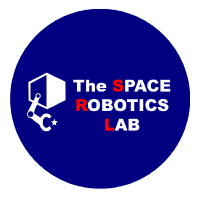Part 1 of 2 Parts
So far, the main purpose of visiting moons, planets and asteroids in the solar system has been scientific research. However, the primary interest of commercial investors in space industries is the use of space as a source of valuable materials, both natural and manufactured, that cannot be created on Earth.
A leading space robotics lab in Japan is driving the development of technologies and missions intended to accelerate the utilization of space in the vicinity of Earth. In 2010, the first samples of material from an asteroid were successfully returned to Earth after the seven-year Haybusa mission. In the years before the launch, Tohoku University’s Space Robotics Laboratory (SRL) worked closely with the Japan Aerospace Exploration Agency (JAXA) to develop and ground-test the robotic sampling apparatus that would make the mission possible.
Kazuya Yoshida is a professor and founder of SRL. He explained that “Our challenge was to devise a way to sample an unknown material from the surface of the asteroid in microgravity with few controls. We trialed and tested many ideas, and eventually settled on a ‘touch-and-go’ mechanism with a high-speed projectile to eject material from the asteroid surface for collection.”
Although it was ultimately successful, this mission skirted the edge of failure many times. This is often the case for space missions launched from anywhere in the world. However, in this case, it was saved by the assistance and perseverance of the Hayabusa operation team in adjusting and reprograming of the controls.
Yoshida recalls that “The Hayabusa mission had many challenges — unforeseen sensor readings caused software failure during the final approach to the asteroid, the projectile failed to fire as planned, and the ion engines ceased functioning on the way back to Earth. However, by devising backup plans and reprogramming, the team managed to overcome all of these challenges. Despite the difficulties, miraculously the mission was a complete success, exceeding all expectations.”
That experience spurned renewed levels of activity at SRL. It has since become a key player in Japan’s growing space industry.
SLR’s expertise in space-ready, extra-hardy robotics for microgravity deployments attracted the interest of Asteroid Mining Corporation (AMC). AMC is a UK-based enterprise seeking to be a pioneer of a future asteroid-mining industry.
Mickaël Laîné is an assistant professor at SRL, and chief robotics engineer at AMC. He explained that “Asteroids are really interesting as potential resources of critical minerals. Each asteroid is unique, but could, for example, contain many times the platinum-group elements available on Earth — which are essential in processes such as hydrogen conversion. The first step in developing an asteroid-mining industry is to recover samples from prospective objects, just as we would on Earth. This is where SRL comes in, with our development of a hexapod robot for sampling in microgravity.”
Laîné’s crab-like, six-legged robot, called the Space Capable Asteroid Robotic Explorer (SCAR-E), is about one yard across when in action. It is designed for positive grip and locomotion over rough terrain in near weightlessness. At twenty-six- and one-half pounds, it is light enough to be deployed on missions similar to Hayabusa. It is designed to carry an eleven-pound payload of instruments, sensors and other experimental devices.
Laîné said, “SCAR-E is being designed as a universal platform that will allow many different groups to collaborate on future missions to explore asteroids. Our first prototype is near completion and will soon go into ground-based testing.”
SLR has been developing microsatellites in the one-hundred-and-ten-pound class for more than two decades as an important part of its space technology research activities. Its first satellite was launched in 2009. Since then, SRL has launched more than ten satellites into orbit using piggy-back launch opportunities organized by JAXA. SRL is now turning its attention to establishing a ‘working satellite’ program intended to make near-Earth space accessible as a commercial and experimental resource.
Please read Part 2 next
